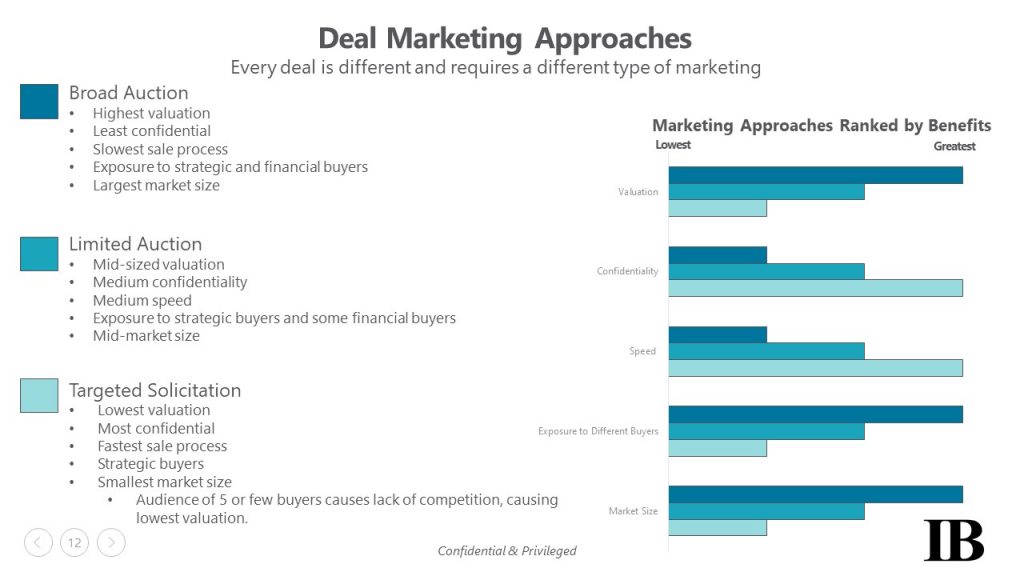Three Types of Auctions for Sell-Side Mergers & Acquisitions
Unless a seller opts (foolishly) to negotiate a sale with a single buyer, some form of auction is the most likely scenario. There are generally three distinct buckets that form the basis for the M&A auction process. The seller and the investment banker will work together to determine which of the following auctions will result in the best outcome. Determining the proper auction requires including the seller’s desire, confidentiality concerns, valuation enhancement and strategic fit and a host of other qualitative and quantitative reasons. There is really no optimal process that fits for all sellers. The following should provide a general idea of and outline.

Targeted Solicitation
In a targeted solicitation, the representing investment banker takes the business out to a relatively small group of potential buyers. This group is generally made up of five or fewer buyers. In most cases, the buyers exclude many financial buyers like private equity groups, choosing instead to focus on qualified strategic buyers. In the case where a private equity group is “deep” in a given market segment, such a group may be included. In a targeted solicitation, the sale generally moves much more quickly, confidentiality is more strictly maintained, but the lack of competition among buyers tends toward a lower valuation for the business.
Limited Auction
The limited auction will yield a larger group of prospective and interested buyers. In this case, the group is typically limited to 20 to 40 potential suitors. In this case, there is a bit more exposure to financial buyers, but the net is still cast with a preference toward strategics. It is obviously a bit more difficult to maintain extremely strict confidentiality, but the potential for obtaining a higher price at the time of sale is bolstered by the broader buying audience.
Broad Auction
The public/broad auction is the most likely scenario, particularly for middle-market companies looking to obtain liquidity. When businesses expand above the $100mm valuation threshold, the pool of buyers shrinks, and thus the auctions tend to lean toward more focused solicitations. The “long tail” in the middle market lends itself more toward the broad, public approach toward sell-side M&A. Maintaining confidentiality, while more difficult here, is still possible through “blind outreach” coupled with the right confidentiality agreements in place.
In a broad auction, the intermediary or investment banker will approach thousands of potential strategic and financial buyers. This approach lends itself to publishing in online, direct-investing sites, broad email outreach and many direct phone calls to potential buyers. The built buyer-list is extensive and the negotiations from Indication of Interest (IOI) to Letter of Intent (IOI) through Purchase & Sale and close can be exhausting. The upside: the highest potential valuations are gleaned from the most broad auctions.
Our team has performed both extremely targeted and very broad auctions across a myriad of company sectors. Let’s discuss which option is right for your business.
- Covid-19 Impact on US Private Capital Raising Activity in 2020 - May 27, 2021
- Healthcare 2021: Trends, M&A & Valuations - May 19, 2021
- 2021 Outlook on Media & Telecom M&A Transactions - May 12, 2021
